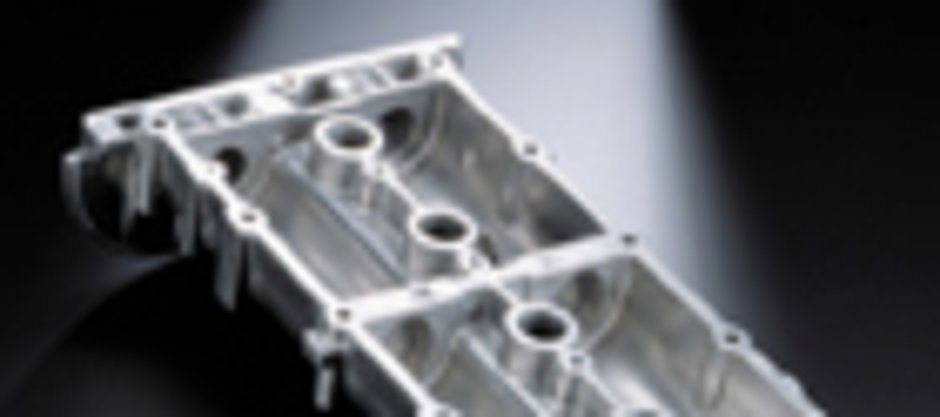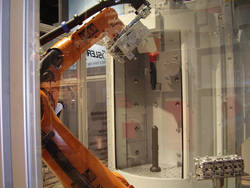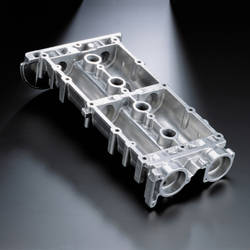Technologically demanding products from Germany are among the best in the world. A substantial share of this growth can be attributed to increasingly automated expansion within the process chain: surface treatment, including deburring. Rösler will present such a system at AMB, Stuttgart (09. - 13. 09. 2008) in hall 6, booth E32.
To achieve these results requires a high degree of automation which limits manual intervention to maintenance and inspection purposes only. The deburring of the inner and outer surfaces of mid-sized cast components, such as cooling channels, is performed by two robots. The processing cell, which is enclosed by protective fencing or a sound absorbing chamber, contains the parts transport system (roller conveyor, conveyor belt, etc.). The component is handled by a 6-axis handling robot equipped with an electro-pneumatic gripper unit, which can be adjusted as required.
|
This handling robot removes the raw component from the parts transport system, and places it in the accompanying RWK 6/12-2 oscillating chamber shot blasting system. The component is then clamped and transported into the shot blast area by a 180º rotation of the turntable. Two Hurricane® high-performance blast wheels shot blast the component while it is rotated continuously by a separately driven satellite table in the blast area, while another raw component is simultaneously fed into the loading area. After the shot blast process is completed, the turntable is rotated another 180º so that the finished component can be removed by the handling robot and placed into the adjacent high-pressure blast chamber. A second robot, connected to the blast chamber, is equipped with a high pressure blast nozzle or a blast connection.
The blast head itself is sealed to prevent dust leakage by a patented sealing system. This allows the blast robot a high degree of freedom of motion, while ensuring the blast system is optimally sealed. The blast robot is pre-programmed with the pattern of channels in the component, and deburrs the part by systematically aiming the blast stream directly into the borings. Once the blasting cycle has been completed, the handling robot completes the total cycle by removing the component, rotating it to empty it of any remaining blast media, and positioning it precisely on the transport system.
The cost-effectiveness and potential cost reductions that this system offers are particularly evident when comparing it to the conservative processing methods in common use. Both overhead monorail shot blasting systems for shot blasting external surfaces, and manual shot blasting of internal surfaces, require operators and thus incur labor costs. The capital investment in the blast robots (including programming and maintenance) pays for itself within a short time. A 3-shift operation can reduce costs by up to € 200,000 ($ 239,100) in the first year.
Rösler's commitment to providing economical process concepts has now been expanded to heavy industry, as well.
Suppliers Catalogue: <link _top>Rösler Oberflächentechnik GmbH




